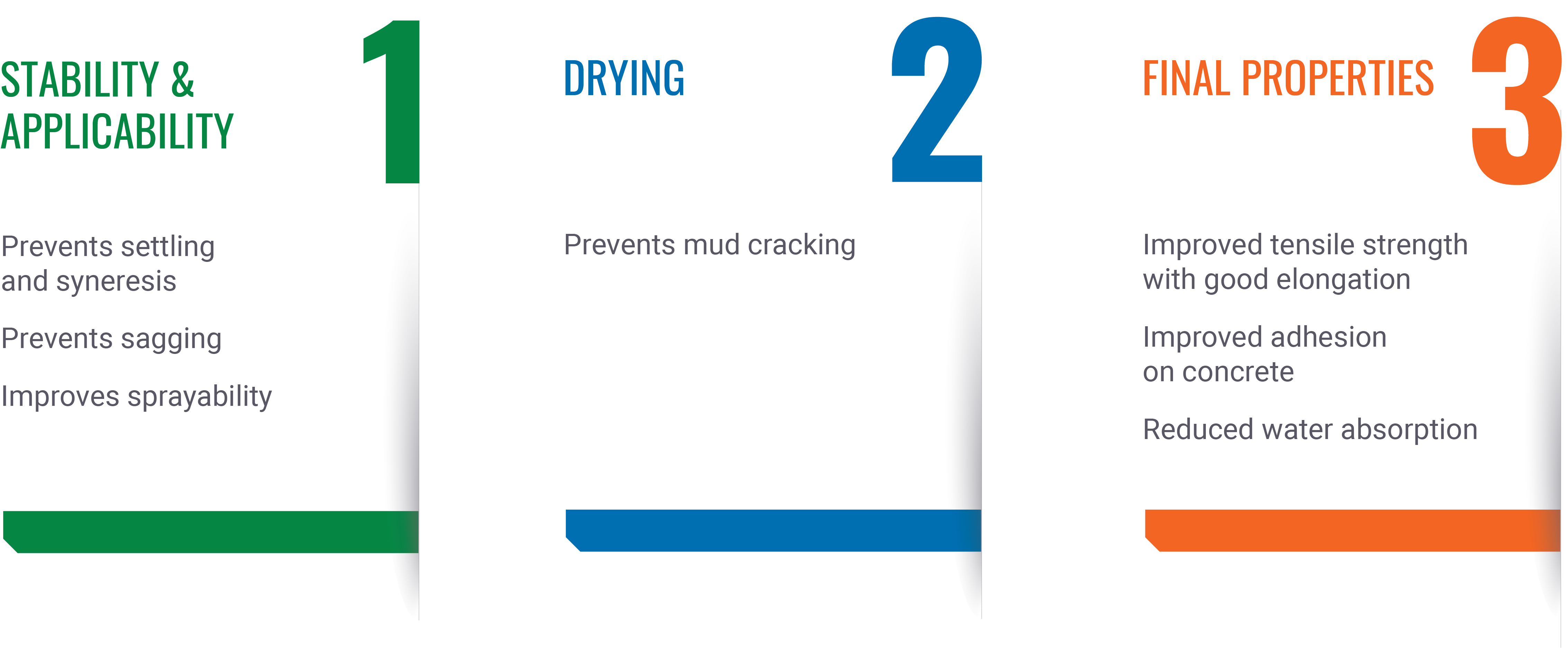
Improved performance of elastomeric coatings with Exilva
Otto Soidinsalo | July 14, 2023
Water based waterproofing elastomeric coatings, especially roof coatings, have become a hot topic lately. One reason for this is that they reduce the heat absorption of the buildings when compared to the traditional asphalt roofs. In addition to heat prevention and energy savings, waterproofing coatings protect the underlying surface from water, UV radiation, chemicals, and deterioration.
Typical requirements for waterproofing coatings are high tensile strength with good elasticity as well as good reflectivity and UV resistance. As these types of coatings are often exposed to ponded water, high water resistance is essential. In addition, waterproofing coatings are applied on several different materials, including new and aged ones, meaning that good dry and wet adhesion on various materials are needed.
➡️ Read more about Borregaard's solutions for elastomeric coating systems here
General challenges related to the formulation of elastomeric waterproofing coatings with traditional thickeners are linked to water sensitivity, applicability, flow and levelling, sprayability, sagging, storage stability, as well as mud cracking. For example, cellulose ethers easily absorb water which leads to reduced water resistance. They also often suffer from poor levelling and flow which will narrow down the available application methods. On the other hand, associative thickeners behave like surfactants, increasing the water sensitivity. They are also sensitive to co-solvents and surfactants, leading to reduced stability. Both cellulose ethers and associative thickeners are known to negatively affect skinning, leading to eventual mud cracking of the film.
Improved performance with Exilva
Exilva offers multiple advantages in elastomeric coatings, compared to the traditional technologies (Figure 1). Some of the key features are the ability to apply high wet film thicknesses without fear of sagging or mud cracking as well as the reduced water absorption of the final coatings.

Figure 1: Impact of Exilva on water based elastomeric coatings.
Increase in strength and significant reduction in water absorption
Figure 2 below, clearly shows the impact of Exilva on the final properties of an elastomeric waterproofing coating. Addition of Exilva into the elastomeric formulation increases the tensile strength of the elastomeric coating without sacrificing the elongation. The tensile strength of the Exilva based coating is 70% higher than that of the HEC based coating whereas the elongation is reduced by less than 30%.
In addition to the increase in the mechanical properties, the water absorption of the coating is reduced significantly. The water absorption for the Exilva based coating is nearly 70% lower than that of the HEC based coating.

Figure 2: Impact of Exilva on tensile strength, elongation, and water absorption of the elastomeric coating.
Summary
The unique rheological properties of Exilva allows easy spraying of the elastomeric coatings. The unique low shear viscosity ensures good sag resistance whereas as the ability to prevent skinning, effectively prevents mud cracking. With the aid of Exilva, you can apply thicker layers without the fear of sagging or mud cracking. The unique fibrillar structure of Exilva also enables an increase in tensile strength with good elongation as well as dramatically reducing the water absorption of the elastomeric coating.
Want to give it a try?
We're happy to discuss solutions and learnings with you. Contact me or my colleagues here, or go ahead and request a free sample of Exilva here:
Written by:
Otto Soidinsalo
Dr. Otto Soidinsalo holds a Ph.D. in organic chemistry from the University of Helsinki. Currently he works as a Technical Application Manager at Borregaard. Before joining Borregaard, Otto was working in various positions in pharma and cellulose derivatives related industries for 8 years, ranging from R&D to product and application development and technical services. Currently Otto is focusing on CASE as well as on paper & packaging applications, especially on barrier coatings. Otto possesses a deep understanding of the natural polymers and their derivatives and their impact on rheology as well as mechanical properties of various applications.
